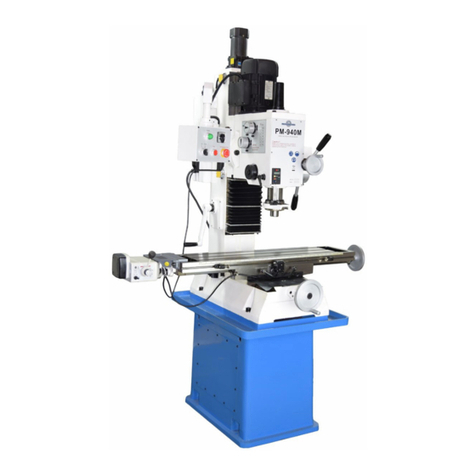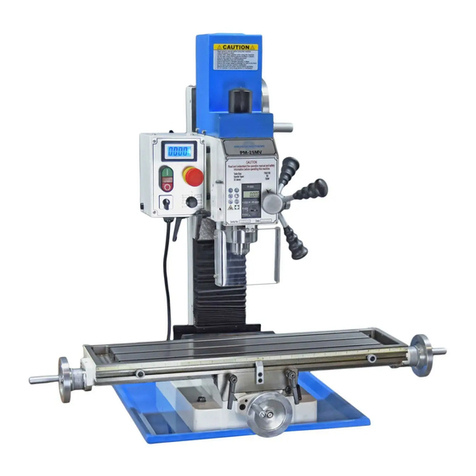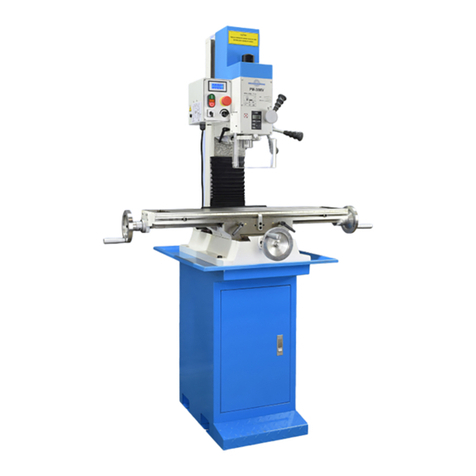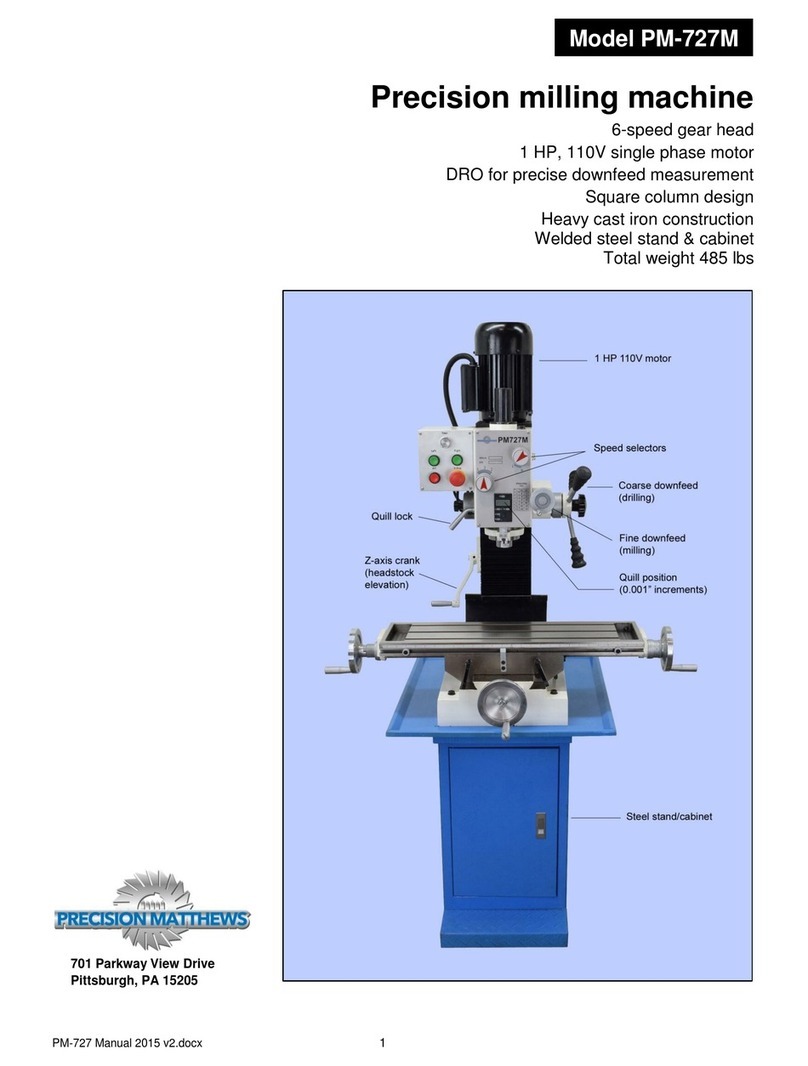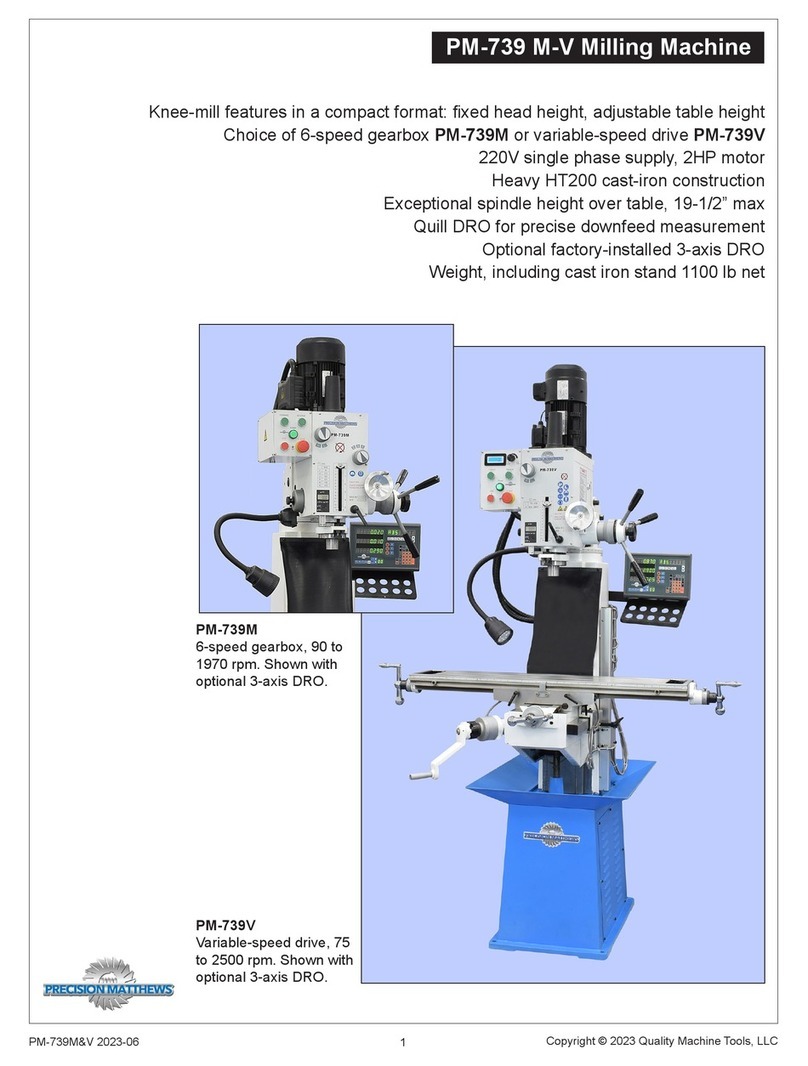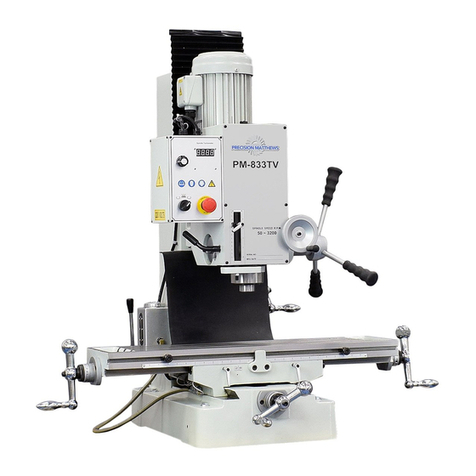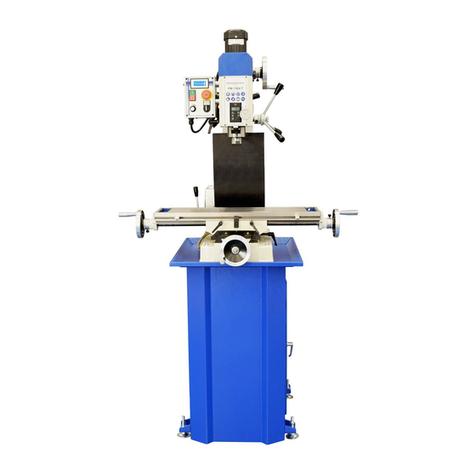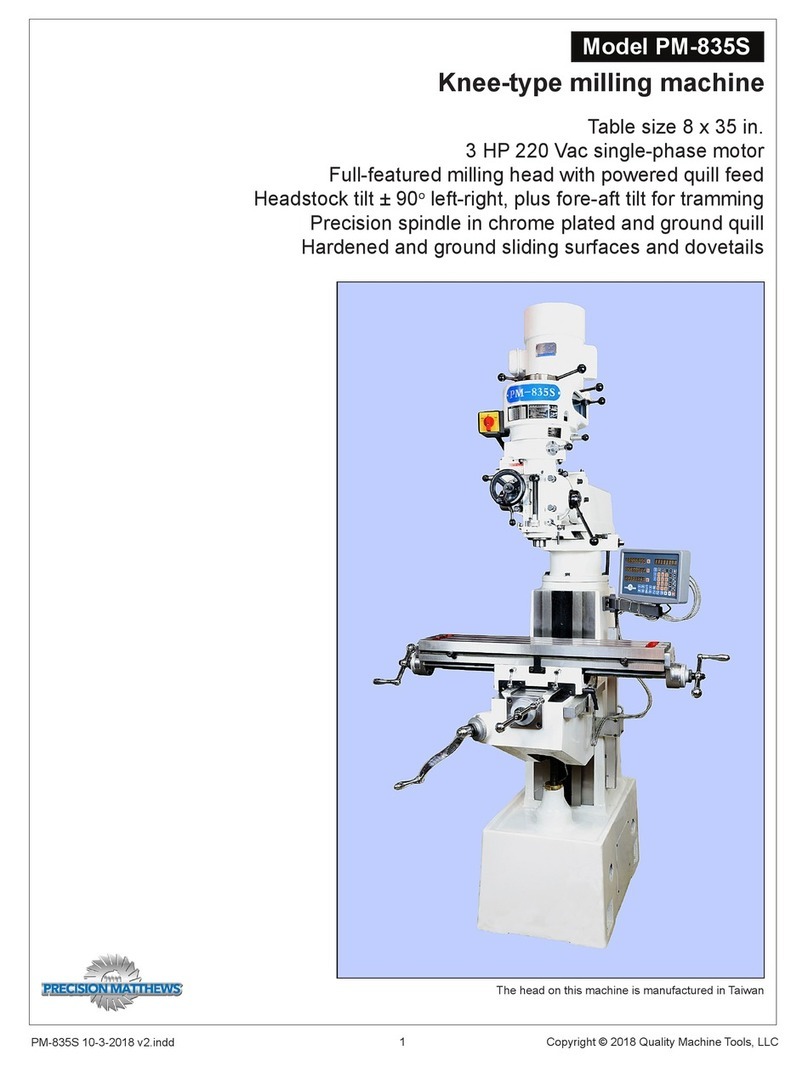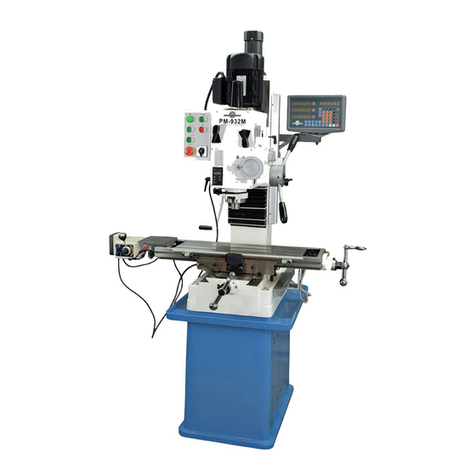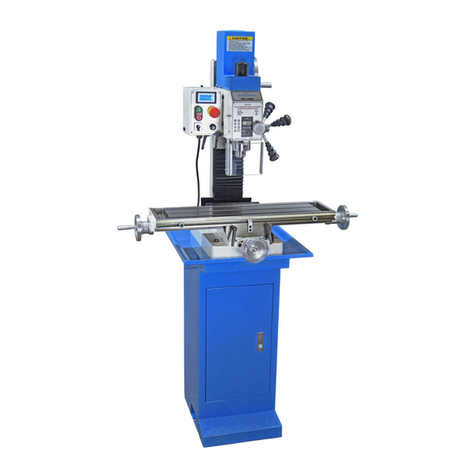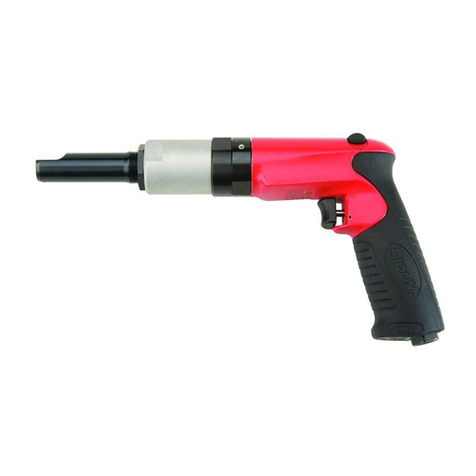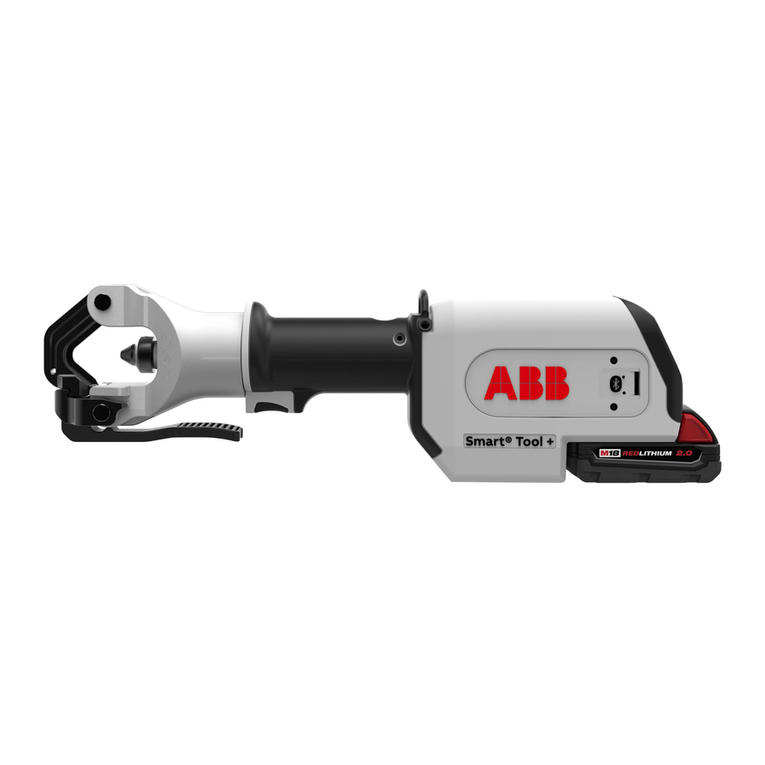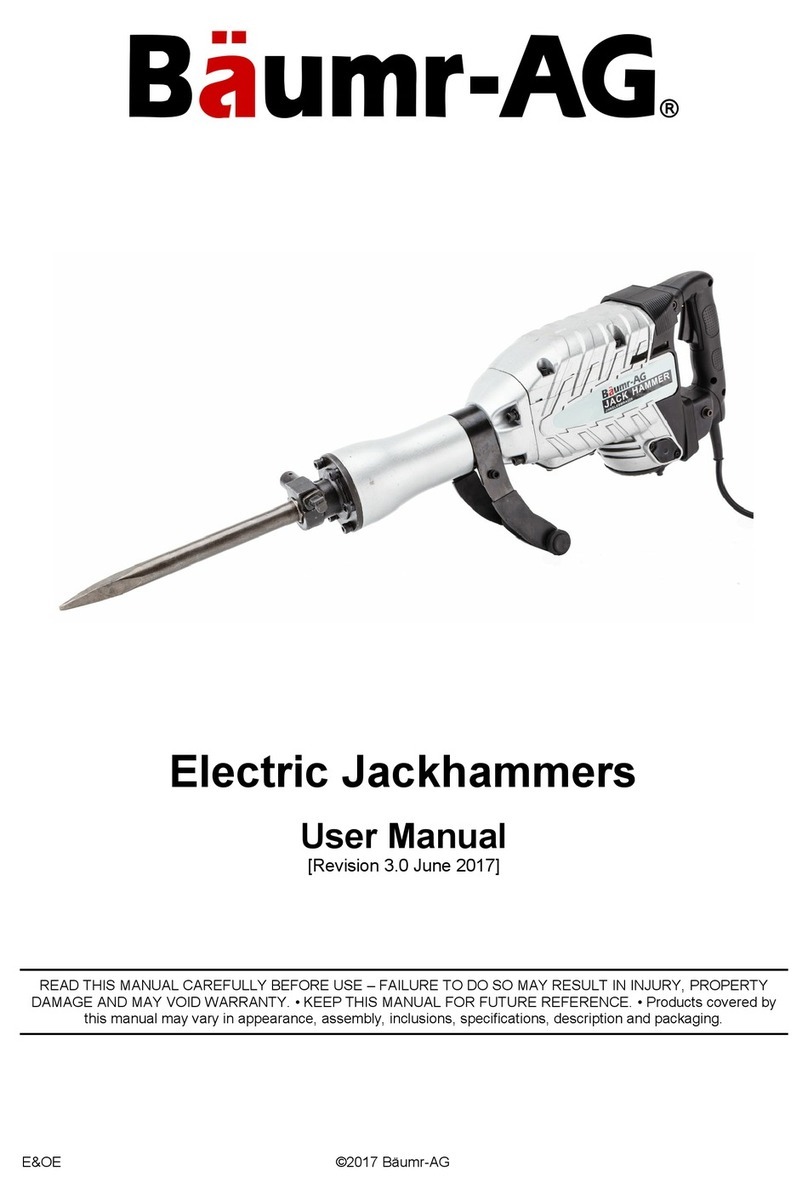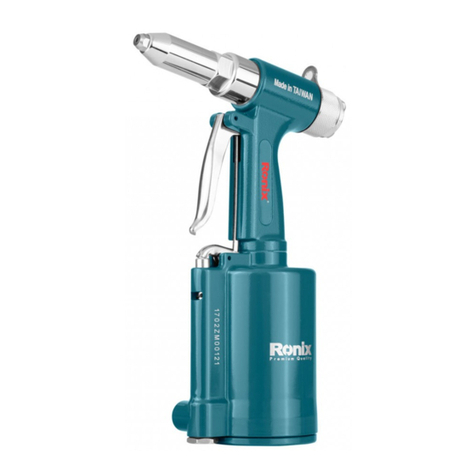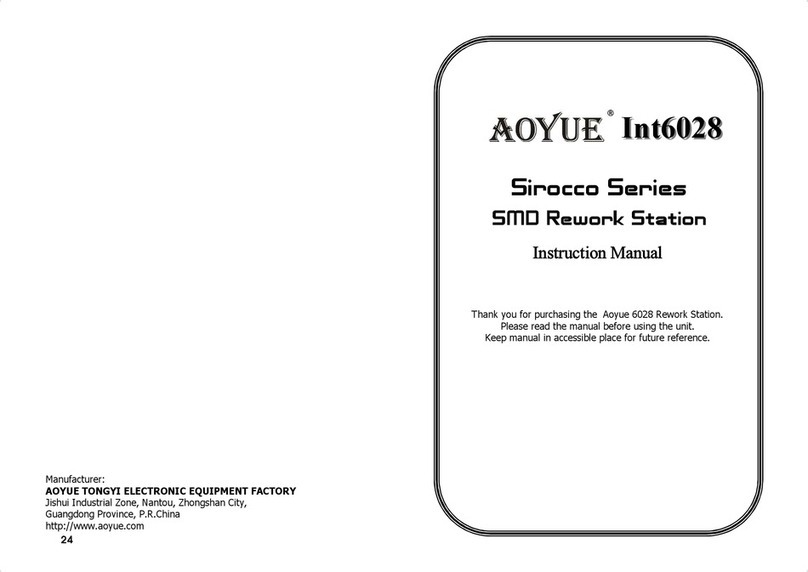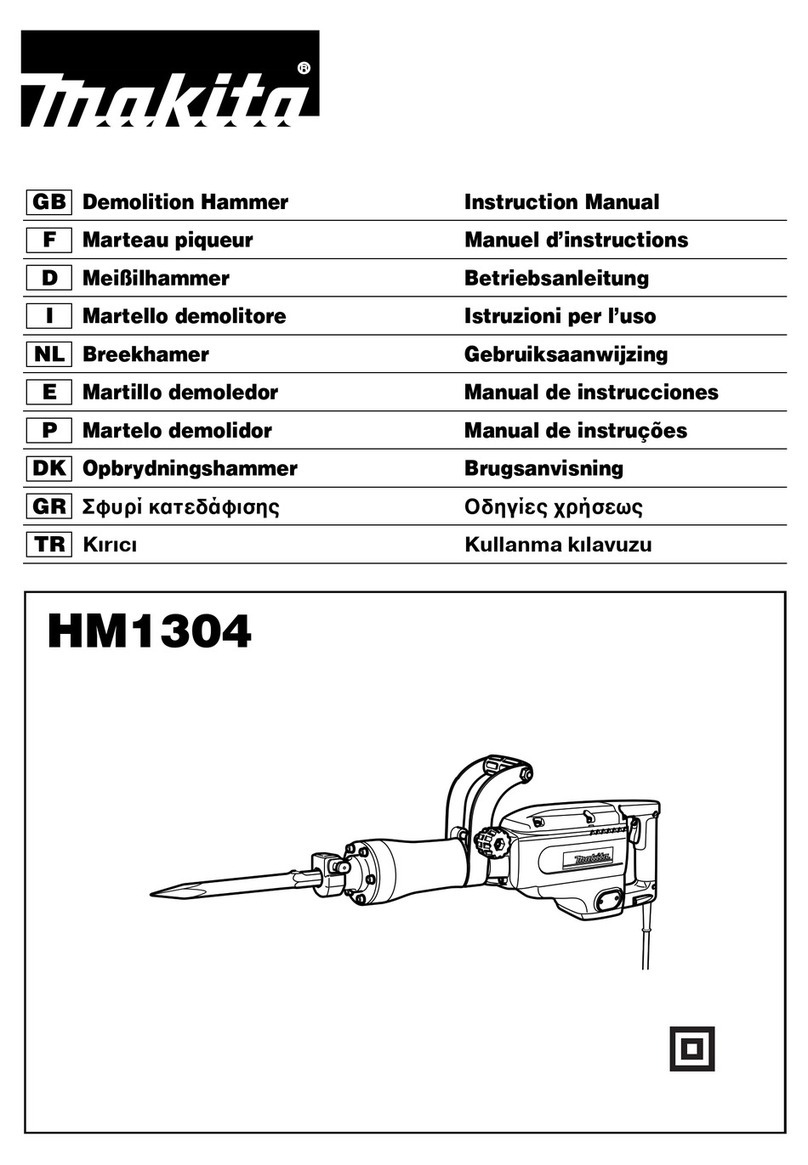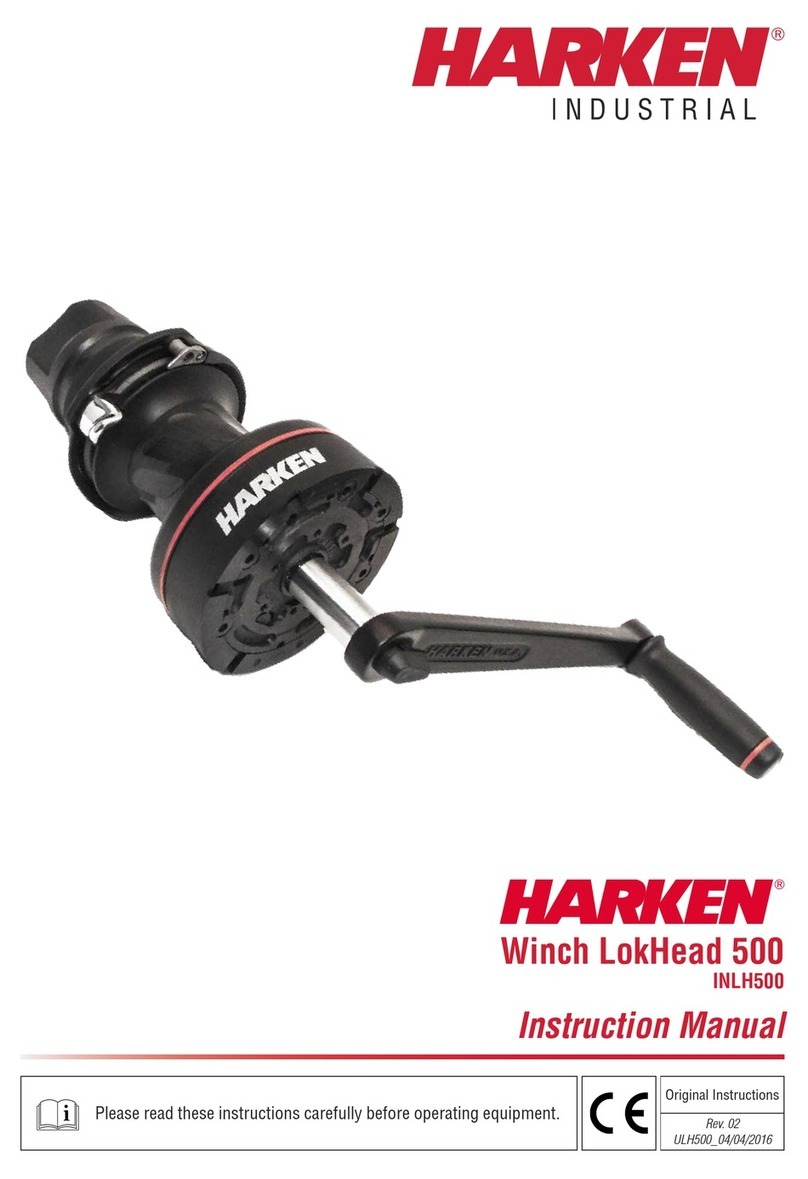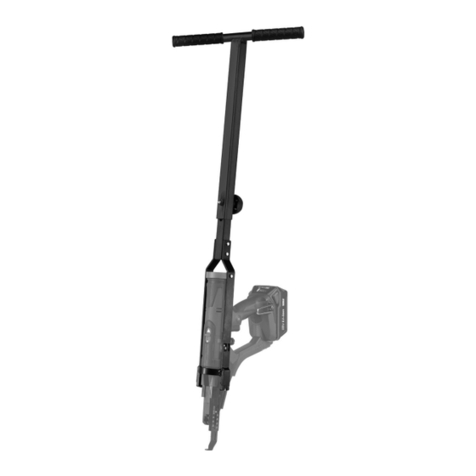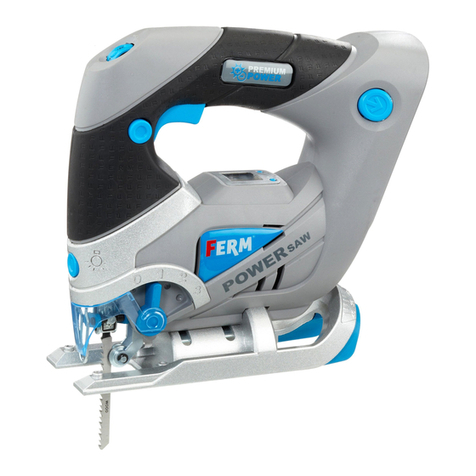
PM-932 Manual 2014 v9.docx 9
Figure 2-6 Quill downfeed controls
The lever hub (1) is full-time connected to the quill pinion. The fine
control knob (2) is connected by a worm gear to the sleeve (3),
and is free to rotate –doing nothing to the quill –if not meshed
with lever hub (1).
Figure 2-7 DRO, depth stop and quill locking lever
Set the depth stop by rotating the knurled knob, arrowed. For milling
operations, lock the quill before making a cut.
disconnect power. Investigate and resolve power feed problems –such as X-axis locks not free, or gears too
tightly engaged (see Section 6, Installation). Allow a cooling interval, press the reset button, then restore power.
Limit switch
Stop blocks on the front surface of the table can be independently set to limit travel to left and right, Figure 2-3
(3). To reposition a stop block, loosen its attachment screw, then tap it if needed to free the square nut in the
dovetail slot. (Slot dimensions: 10osides, 0.3" deep, width tapers from approx. 0.5" to 0.4".)
QUILL DOWNFEED
The quill is controlled in two different ways, coarse
and fine.
In the drilling mode, coarse feed , the mill functions
like a standard drill press –pull the upper lever toward
you to lower the quill. For milling operations the lever
hub is disengaged, and the quill is controlled by the
fine downfeed handwheel. The quill is locked by the
lever to the right of the depth stop, Figure 2-7.
Coarse feed (Figure 2-6)
For drilling operations, loosen knob (4), allowing the
lever hub to rotate independently of sleeve (3). If
desired, set the depth stop, Figure 2-7.
Fine feed (Figure 2-6)
For milling operations calling for precise, repeatable
control of tool depth, tighten knob (4) to engage the
tapered face of hub (1) with the internal taper on
sleeve (3). Tighten the Z-axis locks, Figure 2-8.
Rotate the fine control knob (2) to raise or lower the
quill. Before switching to fine control, it is usually a
good idea to run the depth stop up to the top. Lower
the quill by rotating the fine control knob clockwise,
positioning it precisely either by counting divisions on
the graduated dial, or by reference to the digital
readout (DRO), Figure 2-7. Use the locking lever to
hold the quill firmly in position.
If division-counting, be aware of backlash in the worm
drive. This means that the handwheel must always be
turning in the same direction throughout the entire
process, from setting a reference level to subsequent
cutting passes at specific depths –see the backlash
discussion in "Moving the table", above. Using the
DRO –which has no backlash issues –is less
laborious, but remember that the quill is spring-
loaded. This calls for care when releasing the quill
locking lever prior to repositioning the quill downward.
If the fine control knob has been allowed to
disengage (backed off counter clockwise), the quill
